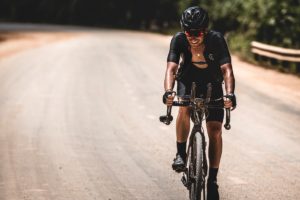
Axel Carion is a cycling explorer. An ultra cyclist who sets out to discover the most remote places and peoples. Axel is also the creator and organizer of BikingMan, a bikepacking race—100% self-sufficient ultra-cycling.
 Axel Carion in figures
Axel Carion in figuresA look back at his crossing of Jordan in February 2020...
Adrien Grouès: Hi Axel, first of all, since when and how did you start cycling so much?
Axel Carion: I started cycling in 2011 after being invited by two friends on a 1200km, 10-day cycling expedition through the Carpathians. Since then, I have developed a passion for traveling and exploring by bike, completing increasingly long and challenging routes (Eastern Europe, Africa, the Middle East, Asia, South America). BikingMan is the child of this passion. The concept was born from a desire to share with everyone the amazing experience of exploring by bike with a "safety net."
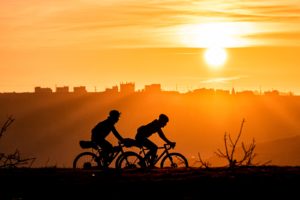
Adrien: Can you tell us a few words about your bike trip to Jordan?
Axel: I invited my adventurer friend Jonas Deichmann to attempt a record-breaking crossing of the Jordan Bike Trail, a cycling route that follows the legendary King's Highway to connect the North (Um Qais) to the South (Aqaba) of Jordan. This route is a "cycling" counterpart to the Jordan Trail, a long-distance hiking route dedicated to walkers and trail runners.
The Jordan Bike Trail is 720 kilometers long with 20,000 meters of elevation gain and crosses several famous places in Jordan such as the Dead Sea and the city of Petra.
Adrien: What made you want to take on this crazy challenge?
Axel: My dream is to cycle the most breathtaking trails on the planet, following in the footsteps of the great human migrations. It began in 2015 with my first crossing of the Andes (8 months and 13,500 km), then in 2019 with the Royal Inca Trail. Jordan was an important crossroads for Middle Eastern trade routes and its history is rich with superb vestiges of the past such as the city of Petra.
Adrien: Can you describe a "typical day" (if there is one) during your Jordanian trip?
Axel: We started cycling around 3am and finished when we were completely "burned out" by sleeping either at locals' houses or in guesthouses available along the route. The travel time was 53 hours (by bike) but we also walked for many hours!
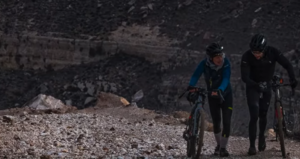
Adrien: Let's talk about headlamps. Over such distances, you spend time on the road both night and day. This is the first time you've set off on such a long trip with a Go'Lum. What were the conditions?
Axel: 720 kilometers at the worst time of year in terms of season. Jonas and I just happened to have the same schedule, and we experienced intense rain and even snow on one peak of the Jordan Bike Trail. The highlight of the Go'Lum was undoubtedly crossing the Wadi Rum desert at night under the stars. This is where scenes from Star Wars were filmed.
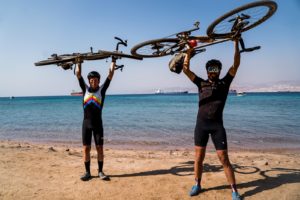
Adrien: What is the advantage of a headlamp compared to fixed lighting?
Axel: The headlamp is, above all, an essential safety solution, a backup in case of problems with a main light (dynamo or battery-powered).
It's also a great tool for viewing the terrain, especially on gravel or challenging mountain bike trails. The head mount allows you to direct the light beam based on your gaze and anticipate potential obstacles.
Finally, it's a useful solution for bikepacking when you're looking for gear in your panniers in the rain or fixing a puncture to see what you're doing.
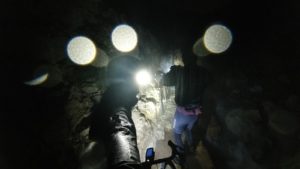 Adrien: What has the new Piom+2 brought you since you started using it?
Adrien: What has the new Piom+2 brought you since you started using it?Axel: Overall, the finish, which was already serious, is even more so (front and accessories). The external charger that can be used as a power bank is more robust and easier to use, especially to know the remaining autonomy on each battery.
I haven't used it yet, but the SOS function can be a plus in emergency situations.
The Go'Lum is an excellent all-in-one solution: headlamp/bike light + power bank that provides security for expeditions where everything ends up breaking. I usually use the "Swiss technique": doubling up on solutions in case of problems, especially on very physically demanding expeditions to limit the stress caused by equipment breakage.
And then I need equipment that is super reliable in these conditions:
- Extreme weather conditions (cold, rain, desert)
- Road conditions (landslides, trees on the route) hence the need for lighting on and next to the bike)
- Access to limited recharges (modularity of the 2 batteries)
- Backup solution in case of equipment failure (power bank function)
- Charging one battery on the bike while the other is in use
To admire Axel's unboxing of the Piom+2:
To feast your eyes - Axel's crossing of Jordan:
To learn more about BikingMan - interview with Axel by Adrien:
Share:
Attacking the world's highest volcano
What cause will the Go'Lum community support?